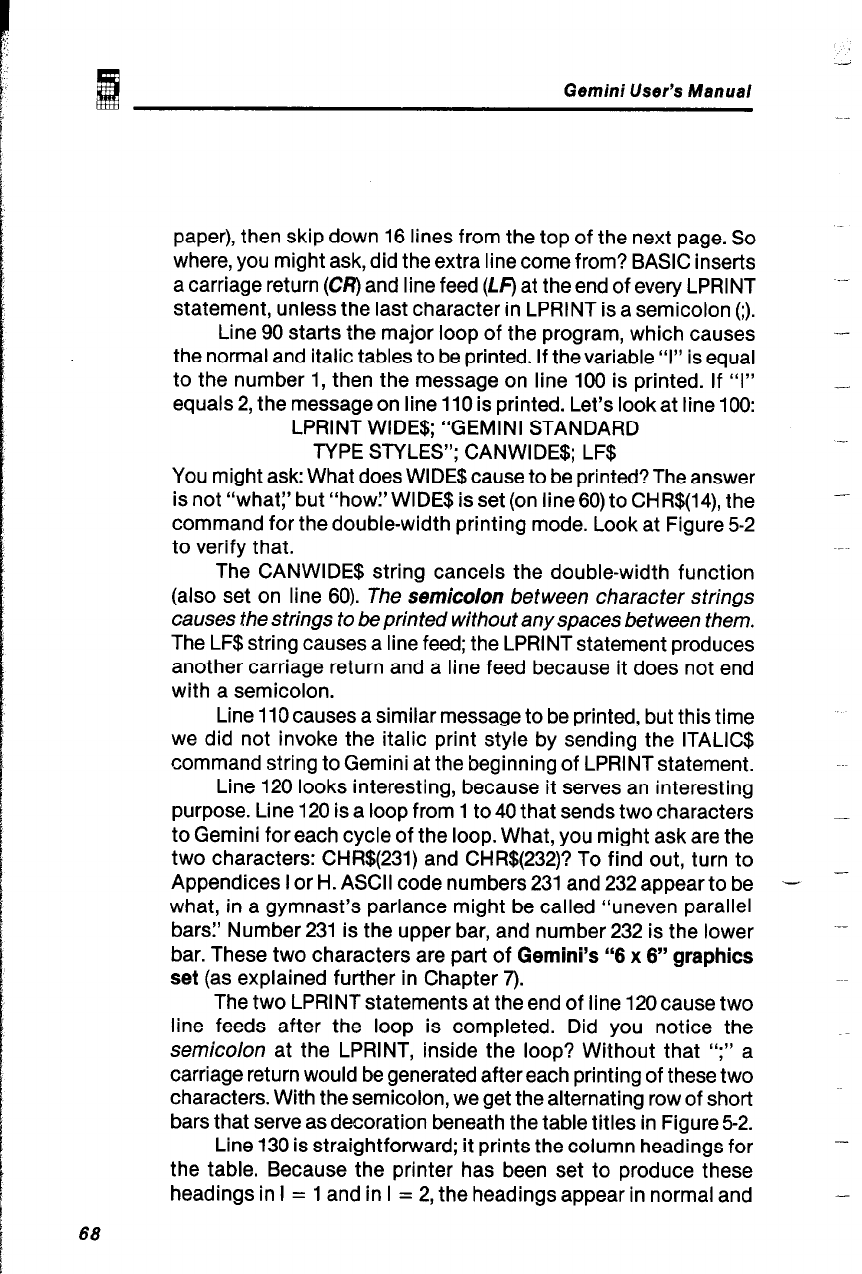
Gemini User’s Manual
--
paper), then skip down 16 lines from the top of the next page. So
where, you might ask, did the extra line come from? BASIC inserts
a carriage return (CR) and line feed (LF) at the end of every LPRINT
statement, unless the last character in LPRINT is a semicolon (;).
Line 90 starts the major loop of the program, which causes
the normal and italic tables to be printed. If the variable “I” is equal
to the number 1, then the message on line 100 is printed. If “I”
equals 2, the message on line 110 is printed. Let’s lookat line 100:
LPRINT WIDE$; “GEMINI STANDARD
TYPE STYLES”; CANWIDE$; LF$
You might ask: What does WIDE!$ cause to be printed? The answer
is not “what:’ but “howl’WIDE$ is set (on line60) to CHR$(I4), the
command for the double-width printing mode. Look at Figure 5-2
to verify that.
The CANWIDE$ string cancels the double-width function
(also set on line 60). The semicolon between character strings
causes the strings to be printed without anyspaces between them.
The LF$ string causes a line feed; the LPRINT statement produces
another carriage return and a line feed because it does not end
with a semicolon.
Line 110 causes a similar message to be printed, but this time
we did not invoke the italic print style by sending the ITALIC$
command string to Gemini at the beginning of LPRINT statement.
Line 120 looks interesting, because it serves an interesting
purpose. Line 120 is a loop from 1 to 40 that sends two characters
to Gemini for each cycle of the loop. What, you might ask are the
two characters: CHR$(231) and CHR$(232)? To find out, turn to
Appendices I or H. ASCII code numbers 231 and 232 appear to be
‘-
what, in a gymnast’s parlance might be called “uneven parallel
bars:’ Number 231 is the upper bar, and number 232 is the lower
bar. These two characters are part of Gemini’s “6 x 6” graphics
set (as explained further in Chapter 7).
The two LPRINT statements at the end of line 120 cause two
line feeds after the loop is completed. Did you notice the
semicolon at the LPRINT, inside the loop? Without that “;” a
carriage return would be generated after each printing of these two
characters. With the semicolon, we get the alternating row of short
bars that serve as decoration beneath the table titles in Figure 5-2.
Line 130 is straightforward; it prints the column headings for
the table. Because the printer has been set to produce these
headings in I = 1 and in I = 2, the headings appear in normal and
68
-
-


















